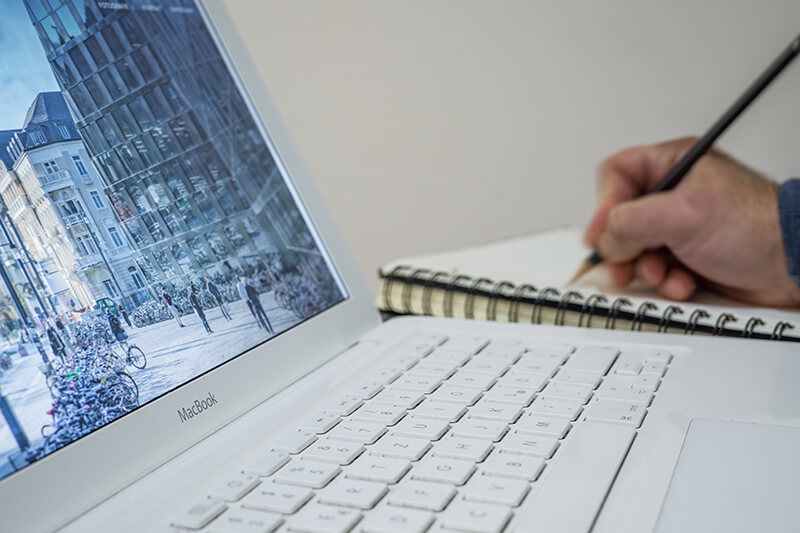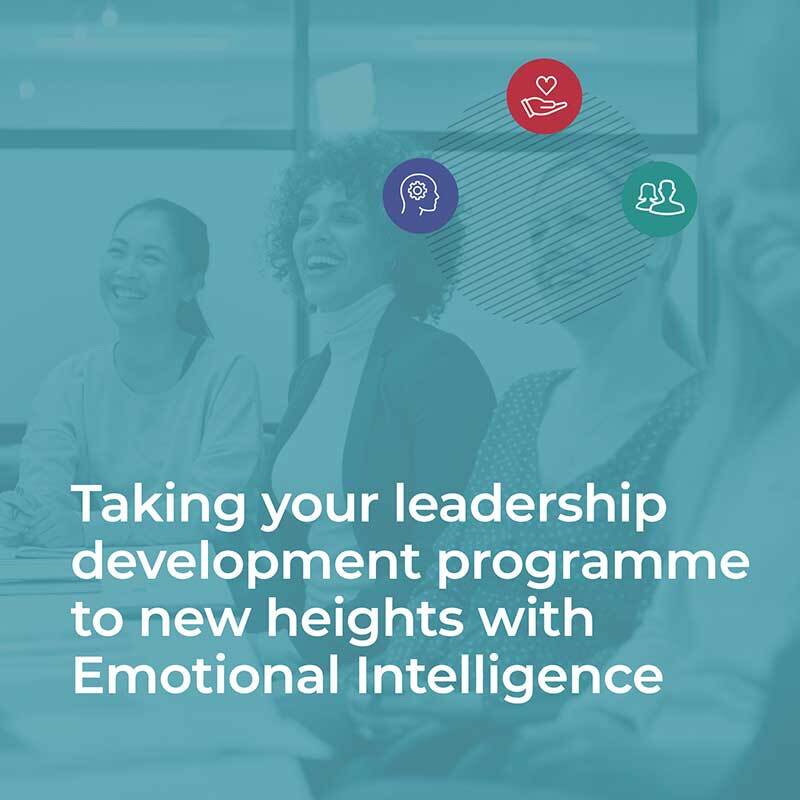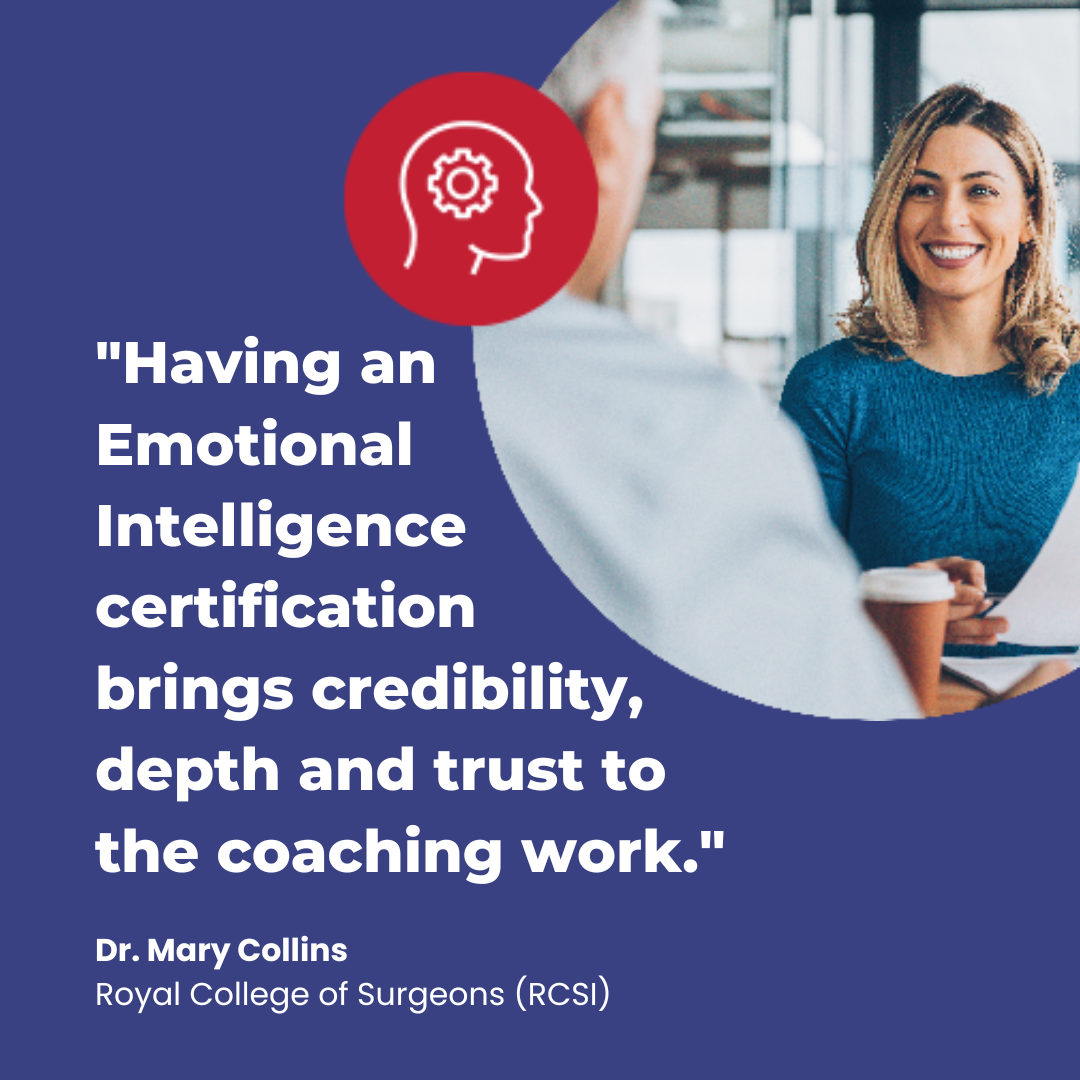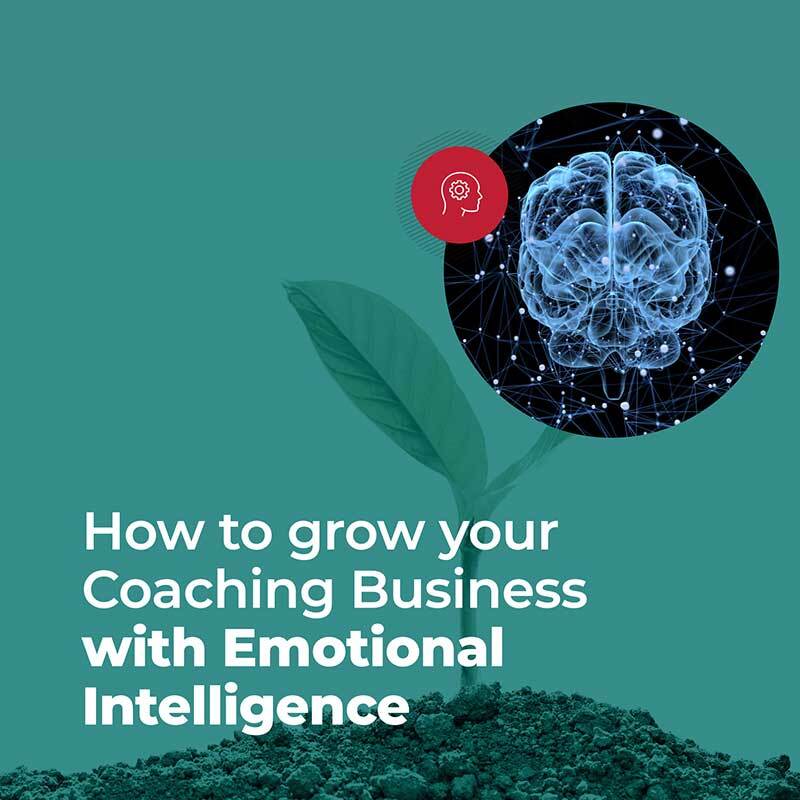
Feb 13 2020 | Tags: Mindfulness
50 Tips for Practising Mindfulness
The practice of mindfulness can boost performance at work and in life. Well-known to fuel positivity, improve focus and reduce stress, it’s also essential to the development of emotional intelligence. With repetition and practice, it is a habit anyone can use.
But what is mindfulness? We’ve all heard the buzzword, but apart from vague links to meditation and perhaps relaxation, few of us know all that much about it.
In a nutshell, mindfulness is awareness in the present, a moment-by-moment focus. It’s not something we are ever taught, but many of the techniques may be things you already sometimes do. Fortunately, there isn’t one way to practise mindfulness. It’s also not time-consuming, so it is easy to incorporate into our everyday lives. Mindfulness can be practised simultaneously with daily tasks. It’s a learnable skill.
Mindfulness has three main elements that help with the practice of it: mind, emotions and body. Understanding these makes the use of mindfulness much simpler and easier. We’ve created a list of tips on these categories and more, to help you reduce anxiety, improve focus and develop greater peace of mind. Many of these tips we use ourselves and others we learned from our incredible clients and partners who use them to inspire and help their teams as well as themselves.

Mindful Emotions
Emotions are one of the main things to become aware of while practising mindfulness. Emotions can be demanding and make us easily lose focus. However, awareness of our feelings and reactions to events can help us with mindfulness, emotional intelligence and maintaining healthy relationships.
On the road to mindfulness, we suggest starting with these initial six tips. They provide a good starting point to discovering the foundations of mindfulness and emotional intelligence.
Relaxed attention
Whether you’re feeling bored, sad, irritated, angry or frustrated give relaxed attention to the emotion, as if you were watching an outsider. This can diffuse negative emotion and help you become calm.
Keep a daily journal
Start your morning with writing or wind up the day on the page. Focus on sensory details. Or write about your life as a passive observer. This will help limit judgement as you check in with your emotions and thoughts on the page. It can also help with awareness of emotions.
Repeat a positive affirmation
It’s easy to go off on a negative tangent of thoughts. A great way to reverse this is by repeating a positive affirmation. The focus on the repetition is a mindful practice and has the added benefit of making you feel more positive.
Practice mindful relationships
Even though mindfulness is a very introspective activity, it can have a positive impact on our relationships. Think of things you can do for others. Even small acts of kinds will improve your relationships and help enhance your compassion.
Listen to people
Even if the person who’s talking to you is the most boring person you’ve ever met, they offer an ideal scenario to practice a mindful conversation. Instead of thinking about and judging what they are saying try mindfully listening to them, give relaxed attention to what they are saying.
Look at people
A great way to improve a relationship is by focusing on someone and really looking at them. Make eye contact but softly allow your eyes to move away from their face sometimes. Try looking without judgement. Like all mindfulness skills, this is something that comes with time.

Mindful Mind
Mindfulness has a reputation for focusing on silencing our inner voice, but this isn’t what it’s about. Few people, if any, have the skill to think of absolutely nothing. Instead, it’s about focus. You don’t have to resist your mind’s natural instinct to wander, but you can train it to return to the present.
Focus on the moment
This ingredient is well-known to go hand in hand with mindfulness. There are plenty of ways to do this below. But a basic tip is to stop comparing the present with the past and to focus on what’s good in the moment. It might be as simple as being grateful for your morning coffee or for the good weather. It could also be as simple as focusing your attention on a task you’re doing.
Notice mental activity
By being aware of mental activity it’s easy to gain perspective on your thoughts. You can do this by directing attention to what is going on in your mind in the present.
Meditation
These days meditation isn’t just practised by yogis and Buddhists, it’s become increasingly popular with professionals around the world. There’s a simple reason for this and it’s that meditation reduces stress and helps us focus. The techniques of meditation can then be applied to mindfulness while you are going about your day. You can learn the techniques at a class, online or here in the next tips.
Four-minute meditation
So how do you do it? It can seem intimidating but start meditating for short periods of time. Set your alarm for four minutes. Sit comfortably, close your eyes, breathe naturally, focus on how you breathe and how your body moves, if your mind wanders bring it back to your breathing, and continue until the four minutes is up. The first few times it might feel difficult to sit still, but after a while, it’ll get easier and soon you’ll want to add more minutes.
Mindfulness meditation
This type of meditation is about observing any wandering thoughts without judging them or getting involved. It’s harder than it sounds but gets easier with practice. When performed throughout a day it can greatly relieve stress.
Objects
It might sound odd but placing your focus on something that isn’t yourself can be an easy mindfulness tool. Like focusing on the breath, placing attention on a glass or a blade of grass can bring us into the moment. Every time the mind wanders bring it back to the object until reaching a place of calm.

Mindful Body
Focusing on the body and physical abilities is an essential part of mindfulness. For those that find it difficult to practise mind or emotion focused habits this can be much easier. We’ve included activities within this section because awareness of the physical is a great way to key into the moment.
Focus on the body
A great element of mindfulness is that you don’t even need to stop what you’re doing to practise it. Whether it’s the tap of your fingers on the keyboard, the posture of your back as you sit at your desk or the placement of your feet on the floor, you can gently bring your attention to your physical sensations. This will stop your mind from spiralling into the future or from over-analysing what you’re doing.
Body scan
A body scan entails listening to the tensions in your body, focusing on them, and then releasing them, either by movement or just the focus of your mind. Don’t allow your mind to analyse why you are tense, just enjoy the sense of relaxation and release.
Breathing
It’s no secret that focusing on breathing is a great way to calm you down if you’re stressed, but don’t wait until then. To help you focus practise breathing in through your nose and out through your mouth. If this proves difficult, countdown breaths from twenty. It may seem too easy, but it will help get rid of those distracting thoughts.
Exercise
Often, when we work out, we try to distract ourselves from what we’re doing. A great way to become fully aware during an exercise routine is to have a purpose and plan like weight-loss and 3 kilometres. Try to slow down. This will help with awareness of what you’re doing. Throughout remind yourself to breathe and focus on your breathing. Exercising mindfully also reduces the chance of injury.
Walking
Walking is one of the most common activities that humans do, so it’s the perfect opportunity to be mindful. Try walking with intention. If you are carefully focused on and aware of each step you take you will begin to feel that quiet sense of peace that instils you when you practise mindfulness. Do the same with sitting.
Eating
Like walking, eating is an everyday activity so it goes without saying that mindful eating can change your day. However, to begin with, it can be hard to eat an entire meal mindfully, particularly if you have children. Start with a snack. A piece of fruit or even a glass of water. If you concentrate and focus your attention, your mind will be calmed. There have even been studies that suggest mindful eating can help with weight loss. Give relaxed attention to feelings of hunger, thirst or overeating.
Many of the following tips use the skills outlined in the categories of emotions, body and mind. All these elements feed into the practice of mindfulness. It is good to begin becoming more aware of them while you go about your everyday tasks. Before you know it, just be paying attention you will be more mindful.

Everyday Mindfulness Habits
Mindfulness isn’t about practising an hour meditation. It just isn’t practical. For a start, most of us don’t have time to sit in silence and meditate for an hour a day. However, there are plenty of simple ways to integrate mindfulness into your every day and they aren’t time-consuming.
Awake to the day
Start your day by noticing your breathing and thoughts. There are many ways to do this and different habits suit different people. We all have unique schedules and morning routines. A great way is as soon as you wake up is to stop, breathe, notice your thoughts, emotions and feelings, and then begin your day. This simple practice will ensure from the very beginning of the day you are aware not only of your thoughts and feelings but also the effort of bringing mindfulness into the day.
Morning habits
There are other ways to start the day consciously. Your mindful morning practice might be intention and focus while you drink your coffee. Or it could be while brushing your teeth you focus on the sensation of brushing. You might even sit and meditate for five minutes.
Check in
Throughout the day, check in. If your body is tense, focus on relaxing it. If your mind is wandering try to bring it back to the moment.
Housework
This might sound strange but cleaning, or in fact, any repetitive or seemingly monotonous task is the perfect time to practise mindfulness. Whether you’re mopping, cleaning windows or washing the dishes this is the ideal time to become present in the moment and experience greater peace and cultivate mindfulness. Try focusing on breathing or the task itself.
Slow down
Wherever you’re going slow down a little and become more aware of your journey. For example, it doesn’t pay to speed home from work so you can spend your evening relaxing. An extra five minutes in the car can mean that you are calm all evening.
Enjoy a time-out
Every now and then it helps to take a break. This allows you to relax during the day. You may choose to take a short nap or retreat to somewhere quiet to sit for a few minutes in silence. This stillness will make you return refreshed.
Other activities
There are so many activities that are easy to do while being mindful like gardening, drawing and brushing your hair. These types of activities are much easier than when having a conversation.

Mindful Locations
What’s great about mindfulness, particularly over meditation, is that it can be practised anywhere, but the following locations are great places to start.
Get back to nature
It might sound obvious but get out in nature – maybe even take your shoes off. The sensation of the ground has become unfamiliar to most of us, so the physical sensations of it can really bring us into the present moment. Not to mention that it’s simply fun.
At work
Even behind a computer, it’s easy to be mindful. Focus on breathing for a minute or become conscious of your body. Check out 6 Easy Tips for Mindfulness at Work
In the shower
When you are in the shower, notice if your mind is skipping ahead to work and the day ahead. If it is, try to bring it back to the present moment. If you bring your attention back to your senses, the smell of soap, the sensation of water, the sound. This will bring you back to the now, and stop any worries taking over your morning.
On the road
Every time you stop at a red light, instead of letting your mind wander to the past or future, focus on your posture. These few minutes every day will contribute to your mindfulness and no time will be lost from your day.
Create a calm corner
This is your own special place so make it however you want. It could just be a comfy chair, a windowsill with a great view or a spot under your favourite tree, it doesn’t matter. What is important is that you establish this place as the place where you are mindful. Try not to do anything else in this spot except practising mindfulness. The more you do it the easier it will become and you will automatically start associating this location with calm and mindfulness.
Focus on transitions
You might have a calm corner, but you can’t stay there all day. Yet it’s easy to practise mindfulness of place while you’re on the move. Every time you move from outside to inside notice the changes that occur like temperature, sound and smell. This will bring you into the present moment.

Mindfulness Tools
There are so many tools that can help us practise mindfulness every day.
Expand your knowledge
A great way to keep your interest and education in mindfulness going is by reading about it. The literature out there, including The Mindfulness Book by the MD of RocheMartin Martyn Newman, a concise and practical interpretation about how to practise mindfulness. Many of these books are also available in audiobook so you could listen on your commute to work.
Apps
Usually, mindfulness advice tells you to turn off all electronics, but that’s not always possible these days. But what can help stop you from playing a game could be a mindfulness app. There’s plenty to choose from. They offer led meditations, individual tracks, emotional check-ins and other programmes to help you on your mindfulness journey.
Use your phone as a mindfulness prompt
It’s easy to get caught up in a busy day and forget to practise mindfulness. An easy way to remember is to set a reminder on your phone to prompt you to focus on physical sensations or your breathing.
Listen to music
This might sound too good to be true but if we mindfully listen to music, we achieve a present awareness. Select a piece you’ve never heard before, shut your eyes and allow yourself to get lost inside the melody. If your focus wanders bring it back to the music.
Turn off your phone
There are so many great tools out there, but sometimes the best tool is having no technology distractions. Emails, the time, texts, social media, the weather, the news – your phone has it all and it can be very tempting to constantly check it. But this is distracting and takes us out of the present moment. A great way to stop yourself from looking at it is turning it off. Even if it’s just for thirty minutes a day. You can use this time to focus on the present.

What’s not mindful
These are things to avoid while practising mindfulness.
Judgement
Don’t be hard on yourself. It’s easy to judge your abilities, especially when it comes to something as abstract and intangible as mindfulness. But there’s no right way to be mindful. Remember that it’s a journey, not a race and you can take it one day at a time. Being non-judgemental is a key aspect of mindfulness. It can be a difficult skill to learn, but when you do the practice will become much easier.
Excuses
Don’t accept your excuses. If you can’t sit still you need mindfulness. If you’re often stressed you need mindfulness. If you want to be more productive or calmer, then you need mindfulness. Equally, there’s always time for mindfulness, because you can do it while you are doing so many other things.
Putting mindfulness off
This is easy to do. You’re busy. You’ve got work and then errands and then you’re tired. But then a whole day will go by, then a week, and you’ve not stopped once to practise a few moments of mindfulness. Picture this same week where you were mindful. It might be busy but you’d be less stressed, more aware and more present.
Multi-tasking
We’re all encouraged to be good multi-taskers, to do a hundred things at once. However, this can have a negative effect on our ability to work quickly. Multi-tasking can scatter our focus so much that we end up doing every task much slower than if we focus on one at a time. A great mindfulness practice at work is to focus solely on one task until it is complete. This type of focus is mindfulness.
Impatience
Mindfulness can be difficult, especially in the beginning. It’s hard to stop thoughts from wandering, and it’s easy to get impatient with ourselves, but don’t. Be gentle on yourself. If you admit that mindfulness is a new skill you’re learning, then you might be more patient with yourself. Every time you feel yourself becoming impatient just gently bring your focus back to your body or breath or a physical object.
High expectations
Mindfulness isn’t a competition. Most of us have high expectations of mindfulness and ourselves. We want to immediately be calm, happy and successful people. But if we let go of this pressure it becomes so much easier to be mindful.
Distractions
It’s easy to allow ourselves to get distracted, especially with technology or when we’re in a noisy setting. However, this makes it even more important to draw our attention inwards. You can’t always minimise distractions but you don’t need to focus on them.
Trying too hard
If we put too much effort into mindfulness it will make us physically and mentally tense. It’s much better to relax and enjoy the present moment.
What promotes mindfulness
There are several ways to continue enjoying mindfulness and staying motivated. These tips will help you ensure it remains part of your life.
Remind yourself
It’s good to remind yourself why you are practising mindfulness. That the benefits are relieved stress and increased happiness, not to mention improved productivity at work. This can help reaffirm your daily mindfulness practices.
Accountability
If you stay accountable for your mindfulness then you’re sure to remember and do it much more frequently. A great way is to have a note on your desk at work or on your fridge. You can also tell a family member or friend to be sure they ask you and keep you accountable. You may even influence them to start.
Make it a way of life
The mindfulness journey never really ends because you’ve got to keep practising it to continue getting the benefits. Throw out the idea of a completion date. Mindfulness is a way of life. As soon as we accept this it’s much easier to keep applying it every day.
Close your eyes
Throughout your day, it’s a good idea to pause for a minute and shut your eyes. This stops the distractions of looking at things around you and makes it easier to draw your attention inwards.
New experiences
A by-product of mindfulness is appreciating moments of wonder and awe. A great way to promote these emotions is by seeking new experiences. This is a way to awaken to your senses by introducing the unfamiliar and inspiring. Different things inspire different people, but some experiences might include a hike, a visit to a museum or gallery, a market, attending a dance class or simply taking a new route home from work.
Don’t forget to smell the flowers
If you’re feeling like you’re bored and no longer enjoying your mindfulness habits, then it’s time to change them up. Take any of the tips you’ve read above and add them to your everyday life. It’s perfectly acceptable to mix things up and keep them interesting.
By understanding and applying mindfulness, you can develop a conscious mind, increase positivity and achieve your goals.








